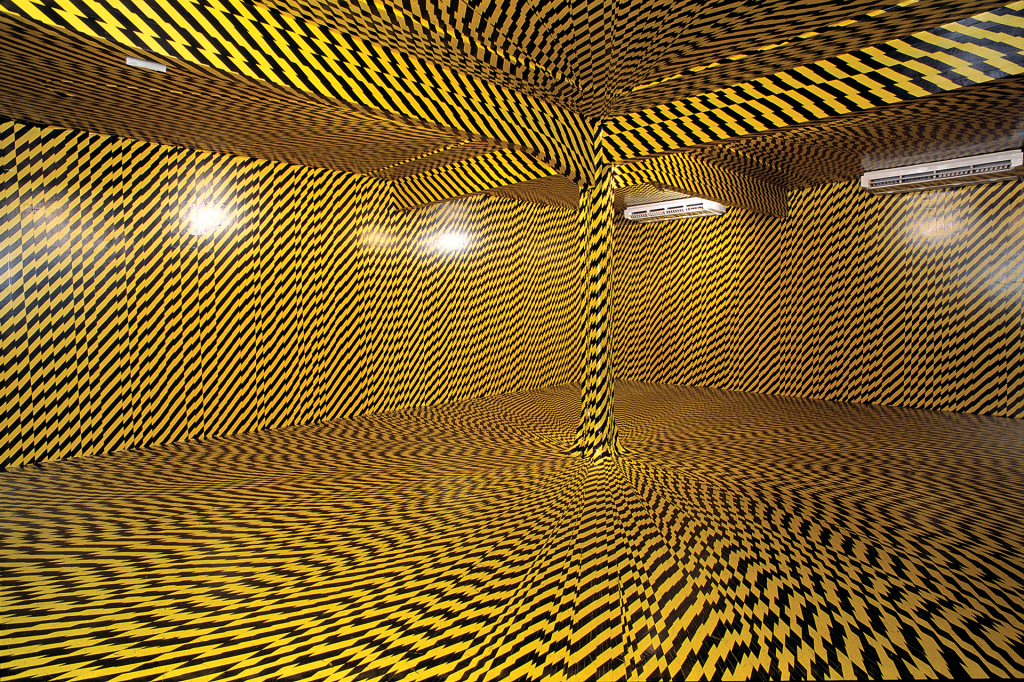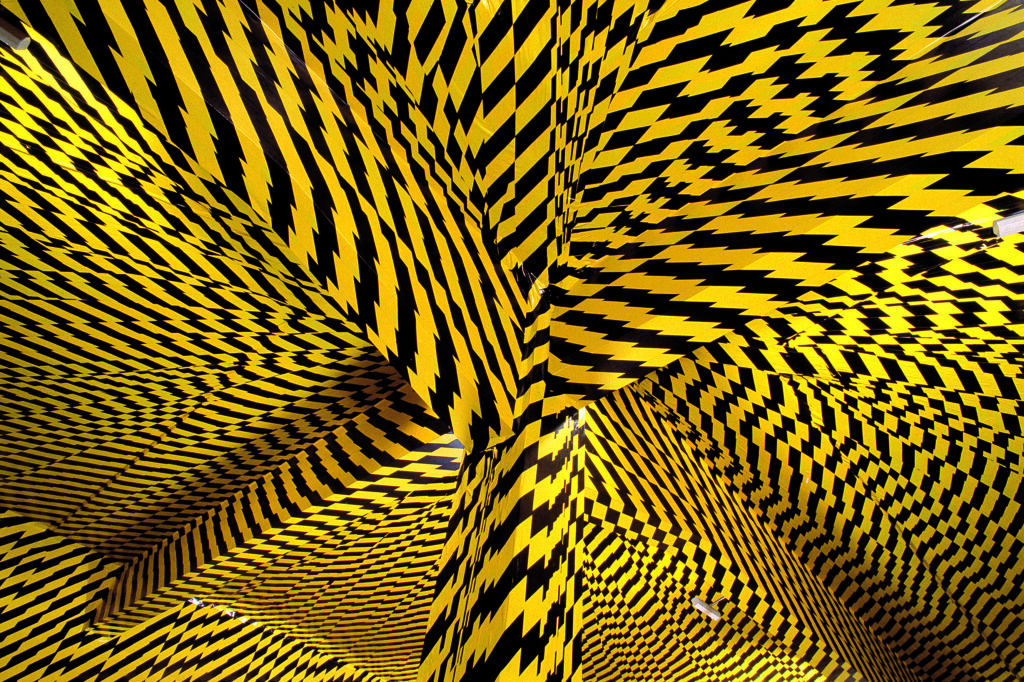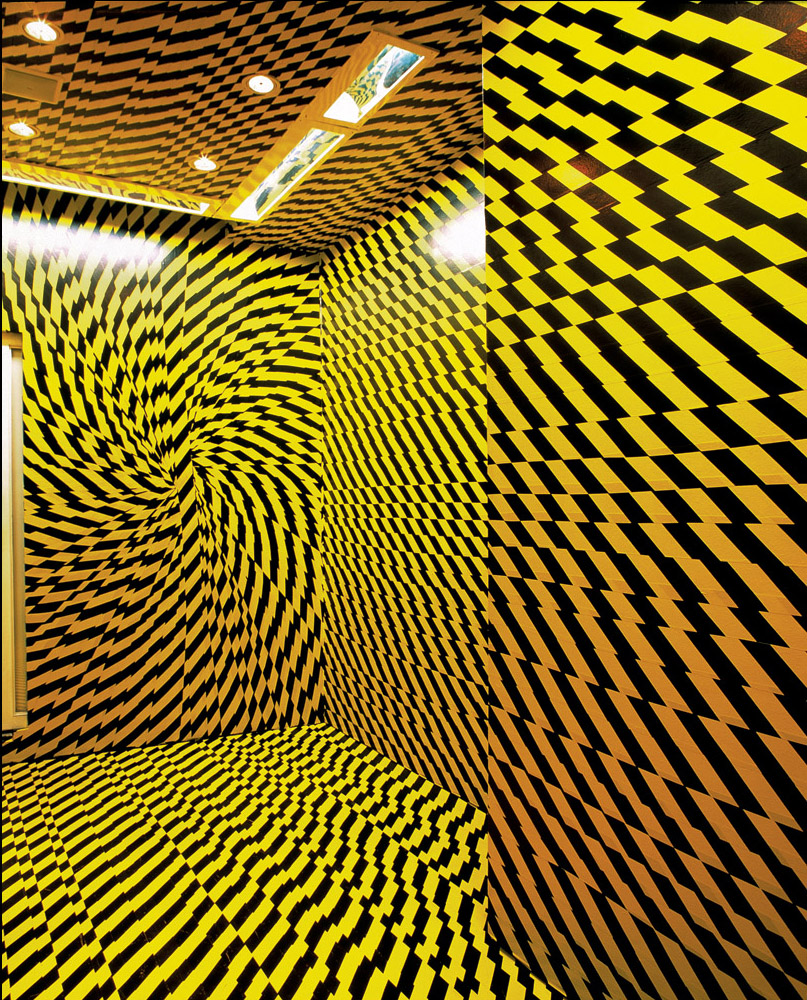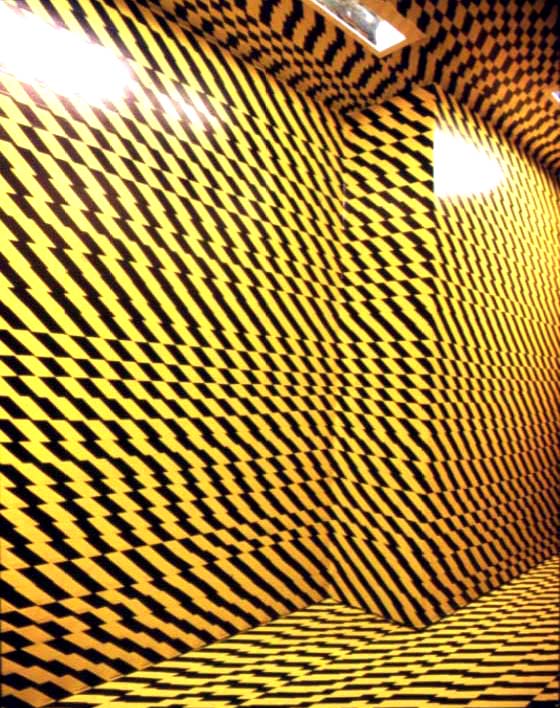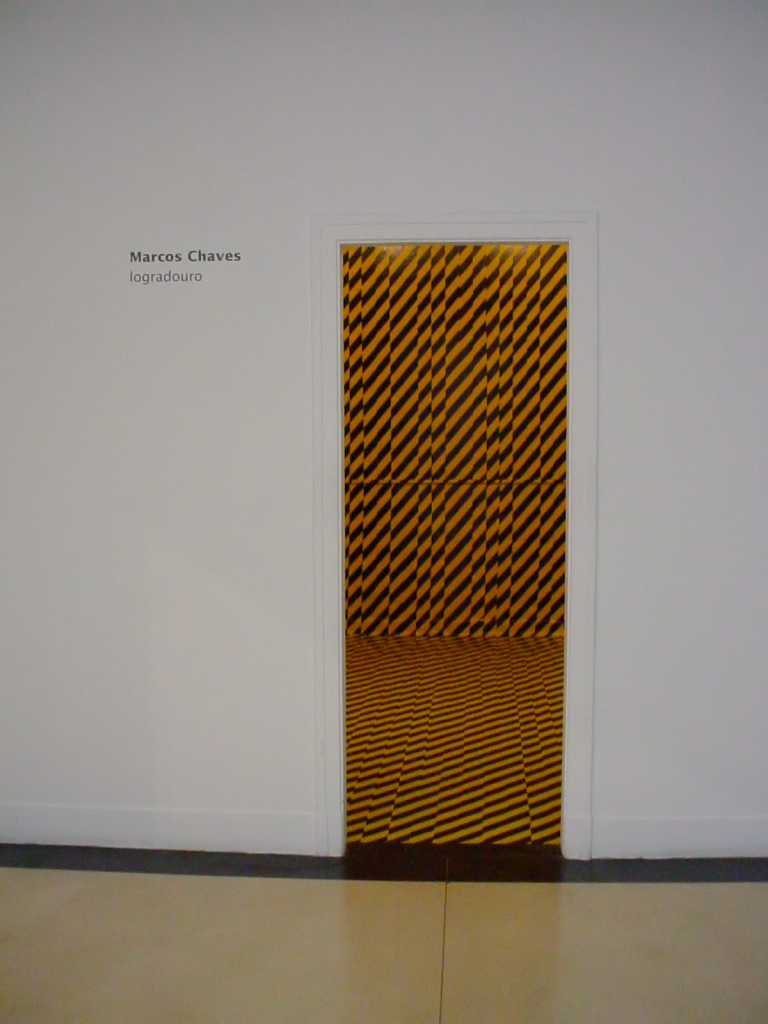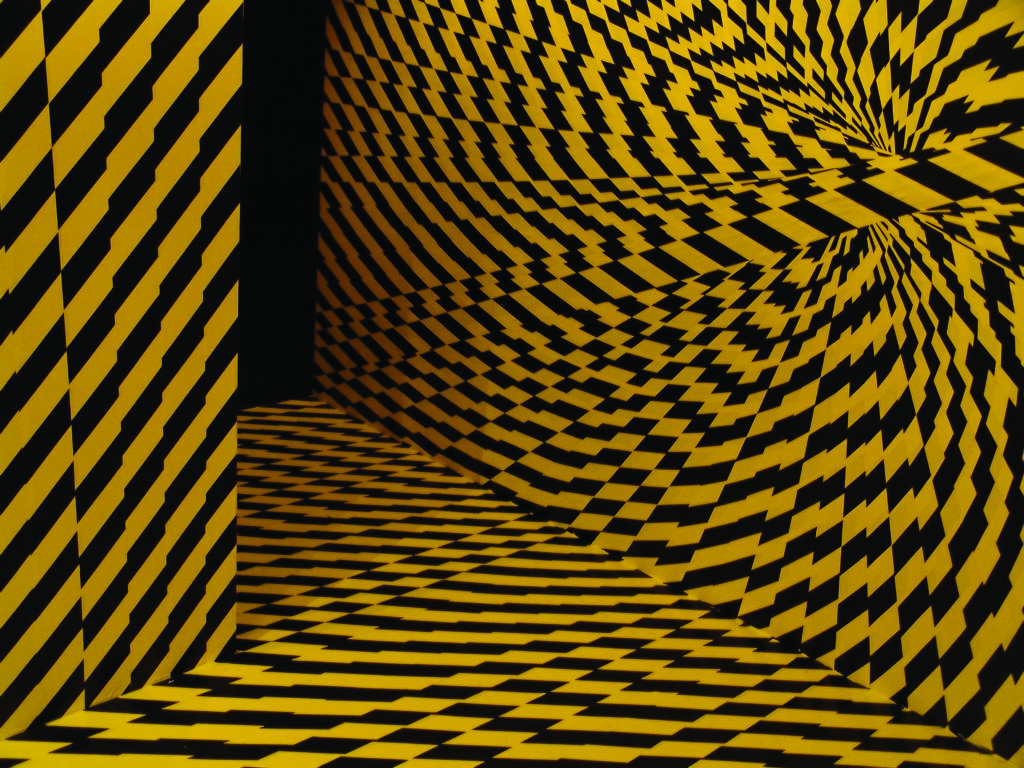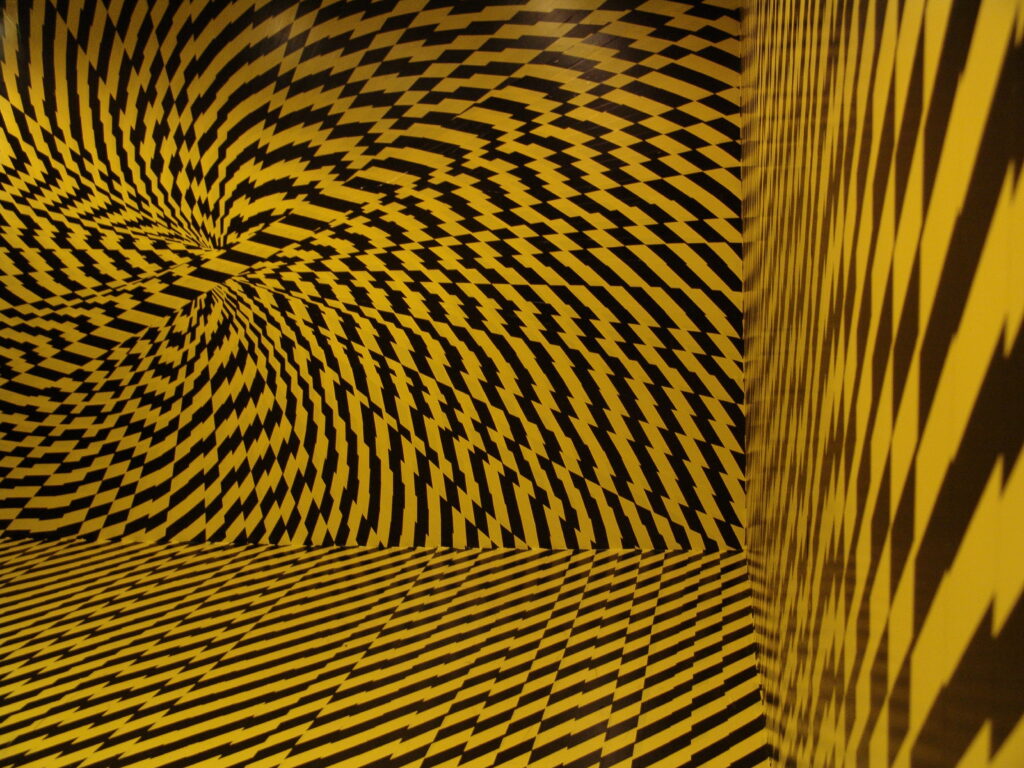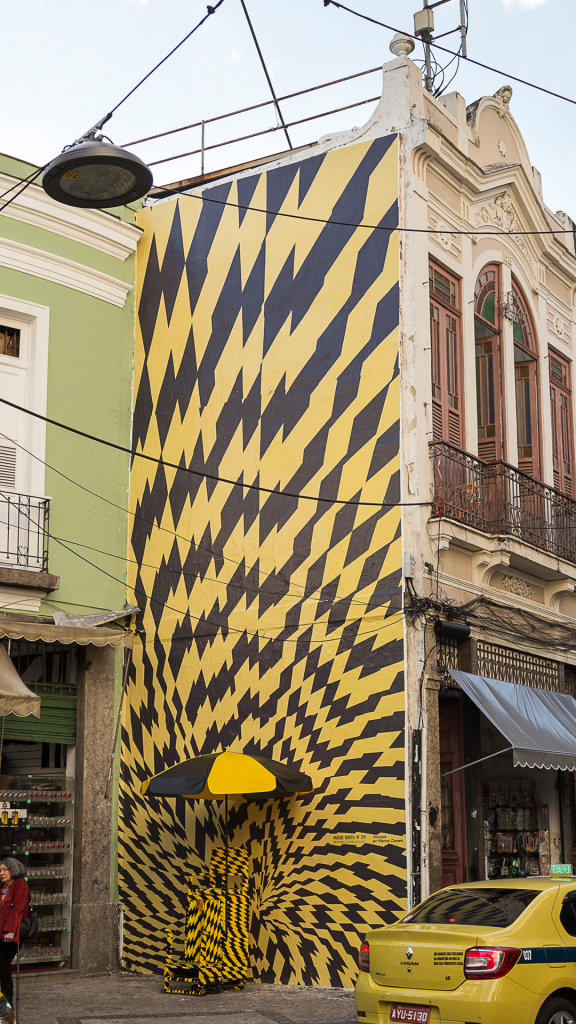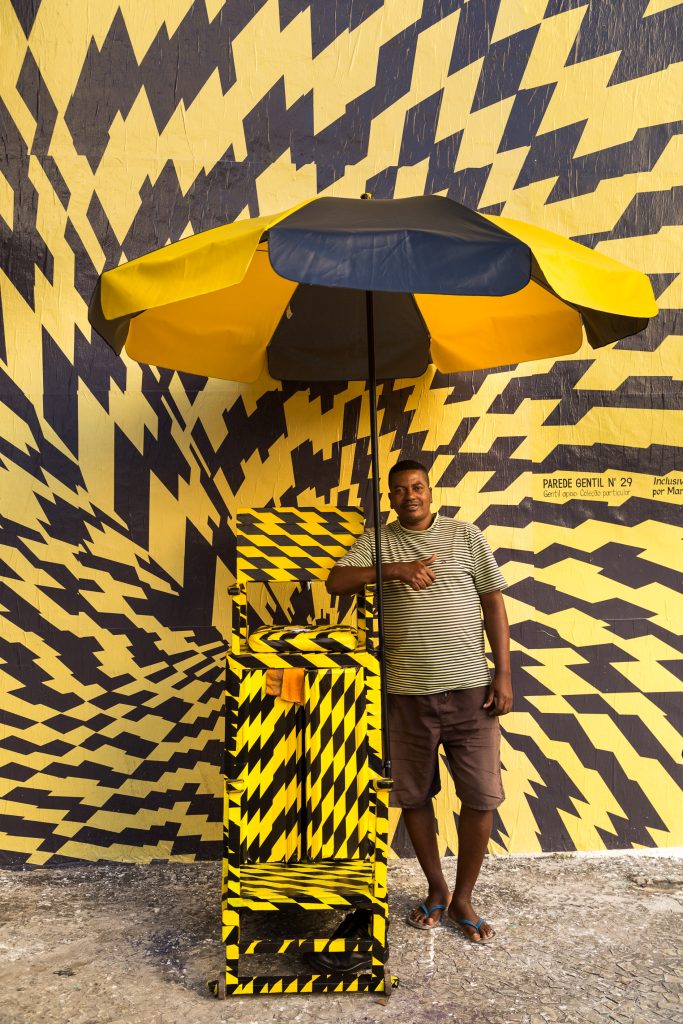


Logradouro



Em Logradouro estamos diante de um trabalho de Marcos Chaves que nos revela o procedimento central da construção de sua obra: o deslocamento de objetos e imagens do cotidiano para o campo da arte. Através destes deslocamentos, Chaves realiza um desvio em significados correntes, banais, gerando a aparição de novos sentidos. Nesta instalação, de forte impacto sensorial, nos deparamos com a apropriação de fitas negro-amarelas, encontradas nas ruas como código viário utilizado para delimitar espaços e orientar pedestres e motoristas.
Pelas mãos do artista, esta matéria trivial e planar é multiplicada, revestindo todo o ambiente da galeria, ganhando assim um volume que antes inexistia. As inversões de Chaves prosseguem: o que tinha como destino original sinalizar, surge aqui como pura vertigem, que antes nos desnorteia do que orienta. Sua forma geométrica, que nos remete ao construtivismo, também ganha um desvio, no lugar da ordem e da calma que as obras do nosso principal legado moderno nos evoca, Chaves nos oferece um ambiente perturbador. Em Logradouro espaço expositivo e obra se misturam. O espaço é a obra. Mas ao mesmo tempo Logradouro é também obra pública, dialoga com o que está lá fora, não só por ser toda ela feita de uma matéria utilizada no espaço urbano, mas também pela sensação de vertigem e velocidade que nos proporciona. Nos colocando assim diante de uma experiência perceptiva e temporal com a qual nos deparamos diariamente quando saímos às ruas das grandes cidades pós-modernas, como por exemplo São Paulo, que hoje abriga Logradouro.
Luisa Duarte
Black IRONY Yellow
Adolfo Montejo Navas
Poet, art and literature critic, translator and visual artist.
January 2002
The mercilessness of irony determines that only what deserves to be saved should be saved, according to an old remark by Cioran. One can say that for most of contemporary art this is a cherished expressive resource, perhaps attuned with the present times, much heavier than what they seem. In Marcos Chaves’s vocabulary this is not only a constant, but also a structural presence insofar as it allows for displaying a veil over what it is actually stripping bare. The result is always something with a transparent disguise, in which almost everything is at sight, but we are only seeing. Visual irony is still going on at Galeria Laura Marsiaj, in the very semantics of the color yellow: not only considered as the color of madness or the bodily color by Kandinsky but it is also the one chosen by urban transit codes as a sign for attention and isolation. A black-yellow plastic ribbon that, as one can see, is the starting point of this daring exhibition that begins by being visual and ends up being extraordinarily physical. In fact, the installation contains a doubt that occupies the whole Gallery, a doubt about color as sensation, as information: “color is not in things, but in the relationship between things and us” (Félix de Azúa). The Gallery’s bet is clear: the work is the site itself. Marcos Chaves knows this when he dislocates the communication process meanings in this work – a black-yellow “language game”. Just as a faint memory of yellow in the artist’s output may send us back to previous works of a different grain (the series of objects Hommages aux Mariages; the Untitled single-file lampposts) whose tonal dominant is recognizable, the choice of the ribbon itself is remindful of an appropriation similar to those Oiticican red-light buckets in the streets of Rio. But above all it is the inner dialogue with Raymundo Collares what is more apparent in this work titled Logradouro (Location), due to the pop/constructivist air that the composition of this installation breathes. Ordinary things can indeed be heard: a certain big-city melody and urban maelstrom signs, although the nature of the works may belong to distinct sequences – more temporal in Collares and more spatial in Marcos Chaves. The installation is nevertheless a kaleidoscope where pop/op/kinetic/neoconcrete elements are articulated in the ever neo-dada eye of the artist. This site-specific work lies upon the social communication of this urban traffic element, upon visual codes and their reading, in fact more ‘specific’ than ‘site’, for its generic boundaries are more ambiguously situated: an installation whose content is the form and whose substance is as internal as it is external. It is a Gallery work and a public-space work at the same time, and we never know if its fluids are coming in or going out – the same energetic spot that every image bears is in this case situated on a wall as a sheaf, or a vortex. Although the material chosen for this work does not leave the plane, this is an all-volume work of pure surface, turning the gallery into a box, a continent of conceptual resonance. The Rio-born artist is well-known for his appropriation of objects and photos, if not of words, but in this case the appropriation is of an art space. The exhibiting space is the work itself. If, on a previous occasion in this same space, Marcos Chaves had brought to a new dimension an installation previously assembled in a Castelinho (small castle) now, in another twist and turn, he sets up a different condition for the Gallery, which becomes magnetized by our presence, making us part of the work. A work that takes up an earlier ‘installational’ bent, always concerned with representational denaturalization. In a certain way, Logradouro is a pictorial work without painting. The composition of the installation also holds in itself a component of visual discontinuity, or better, it respects the geometry of chance, another philosopher’s stone from the French dadaist master. This geometrical chance sequencing holds in it its own humor potion, an indispensable element in the artist, both in language and in substance (as in the sound installation presented at the current São Paulo Biennial). In Logradouro, the urban orientation lines lead us to the Gallery only to find out that the work is precisely the signs themselves. The material, as well as the support and the Gallery itself enter here into a certain deconstructive wheel. The ribbon undergoes an intervention and it in turn intervenes as the owner of sequence and space – the Gallery space becomes a sequential one. The artist’s operation goes on being combinatory, a simultaneous convergence of intervention and appropriation – it unsettles our reference codes through the signs. The inherent exercise undoes an urban street representation system by means of another language use for the same image: the ‘de-convention’ of the urban ribbon. Marcos Chaves’s ‘de-sublimating’ strategy acquires an extra paradox, especially when the artist himself does not recoil from acknowledging that “the sublime can come through via the sense of humor”. And this is what happens in Logradouro. Let’s not forget that irony loves to challenge any representational crisis and even our most ancient visual and ideological conventions. The gaze that follows this work is a dilated one – a visiting gaze, or better, the visit of the gaze. Those are Marcos Chaves’s artistic keys, contained in his family name as Ligia Canongia has pointed out, for chave is the Portuguese word for key. To find ways where there are holes; to find holes where there are objects, pieces, fragments and figures where there are colors. Or, as Lichtenberg’s aphorism proposes: “New gazes for old holes”.
